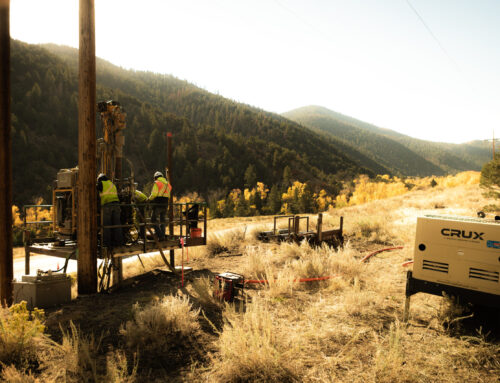
Deep Foundation Design-Build in Wetland Habitat
The Ebey Slough project involved replacing 80 deteriorating wood transmission poles with 15 new steel poles. The project was prompted by a 2006 windstorm that brought down wooden poles weakened by standing water. The transmission lines cross through Ebey Slough Basin, which was reclaimed for flood control and as an estuary for salmon and other wildlife. The lines transport power between Canada and PSE’s service area, and the replacement was expected to significantly improve PSE’s transmission infrastructure.
Team Members
Puget Sound Energy
Wilson Construction Company
Crux Subsurface
Crux’s Role
PSE contracted a design-build team of Wilson Construction, Crux Subsurface and Power Engineers to provide an innovative and constructible design to work within the wetland habitat. Subsurface conditions consisted of deep, soft, unstable sediments with organics. These conditions combined with access restrictions necessitated an alternative foundation design, developed by Crux, Landau & Associates and DCI Engineers.
Eleven structures were located within the slough and did not permit conventional access. Crux used marsh buggies and buoyant tracked pontoon carriers to transport equipment, materials, and personnel to foundation locations. Booms on the marsh buggies were also utilized to set sheet pile rings, which were used as containment basins during drilling and as forms for the concrete caps.
Custom micropile drills were set on templates to drill a radial array of battered micropiles within a sheet pile ring. Tangent pole foundations required 8 micropiles, while heavy angle pole foundations required 16 or 32. In total, 12,000 linear feet were drilled and 132 micropiles were installed. Proof testing was completed at each foundation prior to cap construction. Concrete caps were constructed using a combination of marsh buggy transport and line pumps. The upper plinth section incorporated the steel pole bolt cage and provided a pole base high enough to accommodate rising water elevations.
A key component of the project was minimizing the impact to wetland habitat and providing a final product that pleased the public, while still meeting agency requirements. The project was completed ahead of schedule and is recognized by PSE as a major accomplishment.







